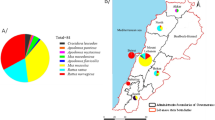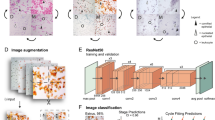Abstract
THE development of rat and mouse strains resistant to warfarin and other anticoagulants has emphasized the need for other means of rodent control. The most important drawback of both anticoagulants and acute poisons is that failure to achieve complete eradication can result in accelerated breeding by the surviving animals and the population being rapidly restored to its original size.
Similar content being viewed by others
Article PDF
References
Howard, W. E., Pest Control: Biological, Physical and Selected Chemical Methods (edit. by Kilgar, W. W.), 343 (Academic Press, New York, 1967).
Brooks, J. E., and Bowerman, A. M., Soap Chem. Spec., 45, 58 (1969).
Brooks, J. E., and Bowerman, A. M., Soap Chem. Spec., 45, 82 (1969).
Marsh, R. E., and Howard, W. E., J. Wildl. Mgmt., 33, 133 (1969).
Brooks, J. E., and Bowerman, A. M., J. Wildl Mgmt., 35, 444 (1971).
Elder, W. H., J. Wildl Mgmt., 28, 556 (1964).
Wofford, J. E., and Elder, W. H., J. Wildl Mgmt., 31, 507 (1967).
Wentworth, B. C., Nature, 220, 1243 (1968).
Sturtevant, J., Toxicol. Appl. Pharmacol, 19, 634 (1971).
Author information
Authors and Affiliations
Rights and permissions
About this article
Cite this article
KENDLE, K., LAZARUS, A., ROWE, F. et al. Sterilization of Rodent and other Pests using a Synthetic Oestrogen. Nature 244, 105–108 (1973). https://doi.org/10.1038/244105a0
Received:
Revised:
Published:
Issue date:
DOI: https://doi.org/10.1038/244105a0
This article is cited by
-
On procaryotic gene expression in eucaryotic systems
Human Genetics (1980)



